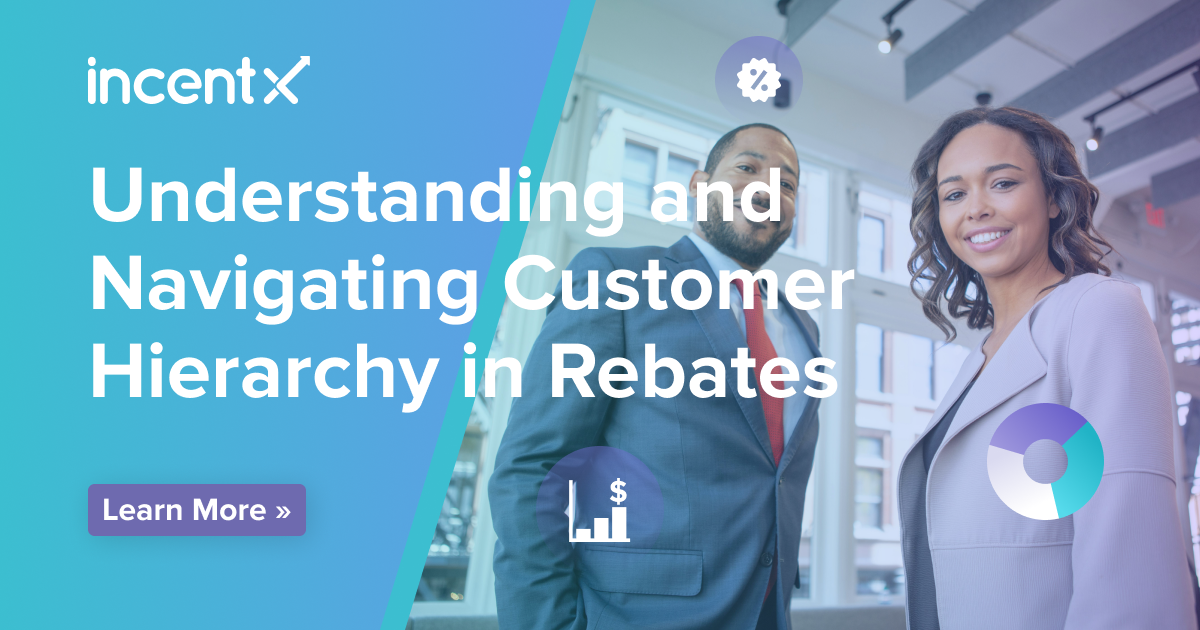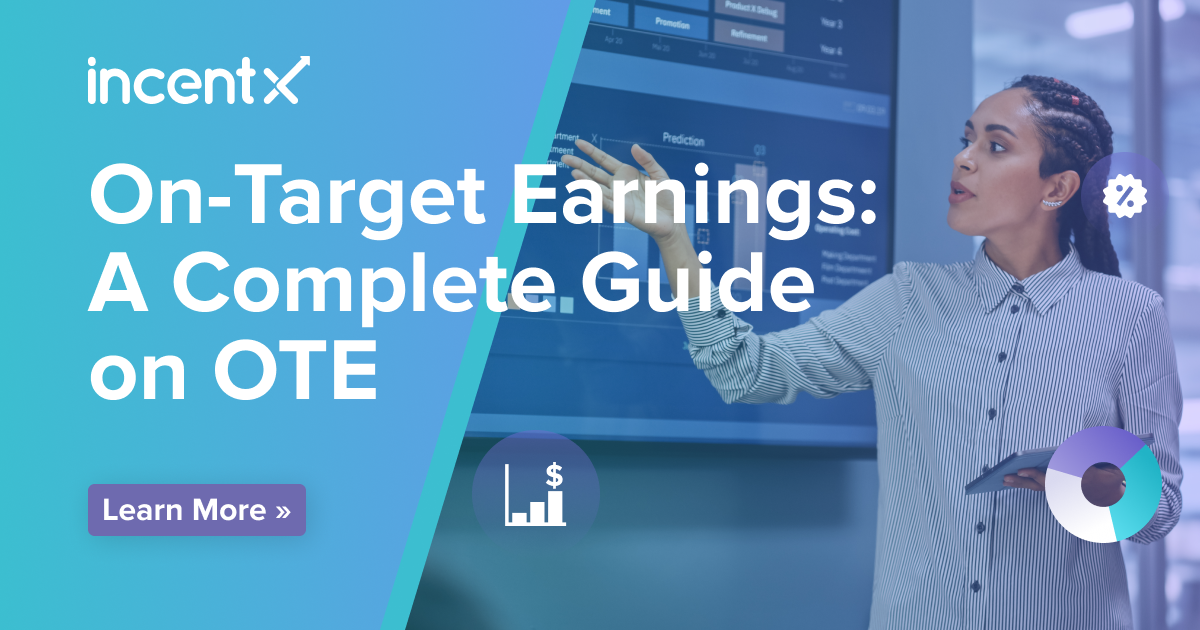Introduction to OTE: The Winning Formula for Sales Reps
On-Target Earnings, or OTE, marks what sales reps can earn by hitting sales goals. It combines a set salary with potential commissions. OTE shows sales reps their earning potential and drives them to meet and exceed their targets.
For companies, OTE shapes attractive pay packages. It helps attract ambitious talent and keep top performers. It links pay to performance, aligning goals across the team.
OTE stands for both chance and commitment. For sales pros, it’s a measure of what they could make. For companies, it’s a promise to reward top achievers. This balance is what makes OTE vital in sales. It’s about clear goals and shared success.
Next, we’ll examine how OTE works, examining how it motivates and guides sales reps to their best performance.
Decoding On Target Earnings: The Fusion of Stability and Performance

What “On Target Earnings” Really Means
On-Target Earnings means the total expected compensation a sales rep can earn for meeting specific performance benchmarks—typically a mix of fixed base salary and variable commissions.
- Base Salary: This is the constant in the equation, providing sales reps with assured income.
- Variable Compensation: This is the flexible part, determined by the sales rep’s success in meeting or exceeding sales targets.
Symbiosis of Salary and Commission
- Foundation and Drive: The base salary offers financial grounding, while variable pay fuels the drive to achieve more.
- Hitting the Mark: When sales reps reach sales targets, they earn their base salary and commissions—this is the “on target” aspect.
- Beyond the Target: When sales reps surpass expectations, the potential for increased earnings grows, thanks to tiered commission structures.
Balancing these components—guaranteed pay with performance-based bonuses—is crucial. It should incentivize sales reps without undermining the company’s financial strategy. This blend is essential for maintaining sales force enthusiasm and commitment to growth.
Setting the Bar: Sales Targets and OTE

The Role of Sales Targets in OTE Calculation
Sales targets are the benchmarks that determine the variable portion of OTE. They’re the goals that sales reps aim for and directly impact the potential total earnings.
- Defining Sales Targets: These are specific revenue or unit sales figures that a sales rep is expected to meet within a set period.
- Influencing OTE: Achieving these targets unlocks the commission portion of OTE. Falling short means earning less, while exceeding them often means earning more.
Sales Targets in Action
Let’s look at how different sales targets can shape the OTE:
- Tiered Targets: Some companies use a tiered system where each level surpassed increases the commission percentage. For instance, hitting 100% of the sales quota might earn a rep a 5% commission, but reaching 125% might bump that up to 7%.
- Seasonal Fluctuations: Some products’ sales targets might be higher during peak seasons, affecting the OTE calculations. A higher seasonal quota could temporarily increase the OTE to reflect the increased sales opportunities.
- New Product Launches: When introducing a new product, a company might lower initial sales targets to account for market entry. This could mean a lower OTE initially, with the expectation it will increase as the product gains traction.
Sales targets are the key performance indicators for sales reps. A well-set sales target considers market conditions, past performance data, and realistic expectations, ensuring that OTE remains challenging and achievable.
Driving Sales Rep Performance with OTE

Incentivizing Excellence Through OTE
OTE is a powerful motivator for sales reps, directly tying their performance to their paychecks.
- Clear Incentives: Sales reps understand that their ability to exceed sales targets can significantly increase their earnings above the base salary.
- Performance Milestones: Many companies set incremental goals, with each milestone offering a bump in commission rates, making each step towards the target financially rewarding.
Strategies for Motivation
Sales leaders leverage various strategies to enhance their teams’ performance using OTE:
- Transparent Tracking: Providing clear and accessible real-time tracking of sales performance against targets helps reps know where they stand.
- Regular Updates: Frequent communication about progress toward sales targets keeps goals at the forefront of a rep’s daily activities.
- Recognition Programs: Celebrating achievements when targets are met or exceeded fosters a recognition culture and sets a high-performance standard.
- Continuous Training: Investing in ongoing training ensures reps have the skills to meet their targets, reinforcing their ability to achieve and surpass their OTE.
By strategically implementing OTE, sales leaders create an environment where exceeding goals is rewarded and expected. This drives individual reps and propels the entire sales team towards higher achievement.
Crunching the Numbers: How to Calculate OTE for Sales Success

Step-by-Step Guide to Calculating OTE
Calculating OTE is crucial for sales reps and management to understand potential earnings and set clear expectations.
- Step 1: Determine the Base Salary: This is the fixed part of a sales rep’s compensation regardless of sales performance.
- Step 2: Set the Commission Structure: Define how commissions are calculated based on sales achievements. This might be a percentage of the sales volume or a flat rate for each sale or deal closed.
- Step 3: Define Sales Targets: Establish clear and attainable sales targets that sales reps need to achieve to earn their commissions.
- Step 4: Combine Base Salary and Potential Commissions: Add the base salary to the potential commissions that could be earned if sales targets are fully met. This total is the OTE.
- Step 5: Consider Accelerators or Decelerators: If your compensation plan includes these, adjust the OTE based on exceeding or not meeting specific targets.
Ensuring Accuracy and Transparency
Accuracy and transparency in OTE calculations are vital to trust and motivation within a sales team.
- Why Accuracy Matters: Precise calculations ensure that sales reps are paid correctly for their efforts. Errors can lead to disputes, mistrust, and decreased motivation.
- The Role of Transparency: Transparent OTE calculations help sales reps understand how their actions impact their earnings. It clarifies the direct link between their performance and their pay.
- Communication: Discuss OTE calculations regularly in team meetings and one-on-ones. Ensure sales reps can access their sales performance data and know how close they are to achieving their OTE.
By following these steps and emphasizing accuracy and transparency, companies can effectively manage OTE, leading to a motivated sales force driven to exceed their targets.
Aligning Sales Rep Goals with Company Vision through OTE

Setting Realistic and Aligned Sales Targets
Accurately setting sales targets is crucial for optimizing OTE strategies, ensuring they support both the sales reps’ ambitions and the company’s overarching goals.
- Assessing the Market: Understand the market conditions and historical sales data. This assessment helps in setting achievable targets that are challenging yet realistic.
- Alignment with Business Objectives: Ensure that sales targets are directly linked to the company’s strategic objectives, whether expanding into new markets, increasing market share, or launching new products.
- Iterative Review Process: Sales targets should not be static; they need regular reviews and adjustments based on evolving business needs and market dynamics.
Fostering a Unified Direction
OTE can bridge individual sales reps’ efforts and the company’s strategic goals, creating a unified direction across the organization.
- Transparency in Goal Setting: Openly sharing how sales targets and OTE are determined helps sales reps understand their role in the larger company context.
- Cohesion Through Compensation: By tying personal earnings to achieving these targets, OTE ensures that reps work for personal gain and the company’s success.
- Motivational Synergy: When sales reps see how their efforts contribute to the company’s goals, they are more motivated and engaged, driving them to work harder and smarter.
When well-aligned with realistic sales targets that reflect individual and company ambitions, OTE systems create a powerful incentive for sales reps. They understand what they need to achieve and why these achievements matter. This alignment fosters a culture of collaboration and shared success, which is crucial for sustaining growth and adaptability in competitive markets.
Benchmarking Success: Average OTE for a Sales Rep Role

Understanding Industry Standards
Benchmarking against industry standards is crucial to effectively setting and adjusting OTE. This ensures competitiveness and fairness in compensation plans.
- Researching Industry Averages: Gather data on average OTE figures from industry reports, salary surveys, and competitor analyses to understand what other companies in your sector offer.
- Role Variations: OTE can vary widely depending on the sales role. For example, an account executive in software sales might have a higher OTE than a retail sales rep due to the deals’ complexity and value.
Impact of Market Conditions
Market conditions significantly influence OTE settings, impacting the base salary and the achievable commissions.
- Economic Fluctuations: In a booming economy, businesses might increase OTE to attract the best talent and incentivize higher sales volumes. Conversely, OTE might be adjusted in a downturn to reflect more conservative sales targets.
- Industry Trends: Innovations, shifts in consumer demand, and new market entrants can all necessitate adjustments in OTE to keep pace with the industry.
- Geographical Differences: OTE should also be adjusted for regional variations in the cost of living and market saturation, ensuring that compensation is attractive and realistic in different territories.
Case Studies: Real-World OTE Applications
- Technology Sector: A tech company might offer higher OTEs to sales reps in emerging tech hubs to capitalize on rapid growth and innovation-driven markets.
- Pharmaceuticals: Sales reps in the pharmaceutical industry often face lengthy sales cycles and regulatory challenges, typically reflected in higher baseline OTE to compensate for these complexities.
By aligning OTE with industry standards and market conditions, companies can ensure they attract and retain top talent and motivate their sales teams to achieve optimal performance. This alignment helps maintain a competitive edge and adapt to changing economic landscapes.
Customizing OTE to Fit the Sales Rep Role and Market Demands

Flexibility Across Sales Positions
OTE isn’t a one-size-fits-all figure; it must be tailored to fit various organizational sales roles’ specific demands and potential.
- Role-Specific Factors: Consider the complexity of the product or service, the typical sales cycle length, and the sales rep’s level of responsibility. For instance, OTE for a sales development representative might focus more on lead generation bonuses, whereas an account executive might have their OTE structured around closing large deals.
- Customizable Components: Adjust the base salary and commission mix according to the role’s demands. High-risk roles with bigger deal sizes might offer a lower base salary but higher commission potential to drive aggressive sales strategies.
Adapting to Market Dynamics
Adjusting OTE in response to external market conditions ensures that the compensation remains competitive and relevant, encouraging sales reps to perform optimally even in fluctuating environments.
- Market Sensitivity: Regularly review and adjust OTE structures to align with current market conditions. For example, during an economic downturn, shifting towards a stable base salary might be necessary to maintain the sales team’s morale and financial security.
- Performance Alignment: Link part of the variable compensation to market growth targets or specific business objectives, such as expanding into new territories or increasing market share in existing ones.
Tailoring to Individual Performance
Recognizing individual achievements and tailoring OTE to encourage further success can lead to higher overall productivity and satisfaction among sales reps.
- Performance Reviews: Use periodic performance evaluations to adjust OTE based on individual results, acknowledging high performers with the potential for higher earnings.
- Career Progression: As sales reps develop and take on more significant responsibilities, their OTE should evolve to reflect their increased value to the company.
Practical Examples of Customized OTE
- Emerging Markets: In emerging markets, where the potential for rapid growth is high, companies might offer more aggressive commission rates to capture market share quickly.
- Tech Industry: In the tech industry, where products often have shorter life cycles and fierce competition, OTE might heavily weigh towards performance incentives to drive fast and effective sales strategies.
Companies can maintain a motivated and effective sales force by customizing OTE to fit the specific requirements of different sales positions and adapting it in response to individual performance and market dynamics. This customization not only aids in recruitment and retention but also aligns individual ambitions with corporate goals, driving sustainable business growth.
Sales Quotas: The Pivotal Point for On-Target Earnings

Defining Sales Quotas
Quotas are specific goals set for sales reps. They typically involve revenue targets, the number of deals closed, or specific product volumes sold within a set timeframe. These quotas are central to the structure of OTE, as they directly influence the variable compensation component.
- Revenue-Based Quotas: These involve setting a dollar amount the sales rep is expected to generate.
- Volume-Based Quotas: This type involves a certain number of units sold or deals closed.
- Activity-Based Quotas: Sometimes used with more traditional quotas, these focus on measurable activities like the number of client meetings or calls.
Significance of Sales Quotas in Achieving OTE
Quotas are integral to motivating sales reps and guiding their efforts toward company goals.
- Motivation Tool: Quotas push sales reps to maximize their efforts, directly affecting their potential earnings through OTE.
- Performance Measure: They provide a clear benchmark for performance evaluation, determining whether sales reps meet, exceed, or fall short of expectations.
Balancing Ambition with Attainability
Setting quotas requires a delicate balance to ensure they are challenging yet achievable.
- Realistic Targets: Quotas should be ambitious to inspire effort but realistic enough to be achievable, considering market conditions and individual capabilities.
- Flexibility: To remain relevant and fair, quotas may need to be adjusted based on changes in the market or the sales reps’ territories.
- Incremental Goals: Setting incremental milestones within larger quotas can help maintain motivation, providing smaller, short-term targets that add up to the main quota.
Aligning Quotas with Market Dynamics
To keep quotas relevant and motivating, align them with market conditions and individual sales rep performance.
- Market Adjustments: Regularly review and adjust quotas based on external factors like economic shifts, competitive actions, and market saturation.
- Individual Adjustments: When setting individual quotas, consider a sales rep’s historical performance, skill level, and territory potential.
Practical Application of Sales Quotas
- Case Study: A tech company might set higher quotas in Q4 to capitalize on budget flushes in many industries, adjusting OTE to reflect the higher target.
- Seasonal Adjustments: In industries with significant seasonality, like retail, quotas (and thus OTE calculations) might be higher during peak seasons to reflect the increased sales opportunities.
By effectively defining and managing quotas, companies can ensure that their OTE structures drive desired sales behaviors and outcomes, aligning individual efforts with broader business objectives. This strategic alignment not only boosts sales performance but also enhances the overall profitability and growth of the company.
Leveraging OTE to Attract and Retain Top Talent

OTE as a Recruitment Tool
OTE is an invaluable tool for hiring managers to attract top sales talent, from SDRs/BDRs to VPs of Sales. It plays a crucial role in not only attracting potential candidates but also clearly communicating the earning potential and growth opportunities within the company.
- Competitive Edge: OTE structures that are competitive within the industry can make a position more attractive to high-performing candidates.
- Transparency in Earnings Potential: By clearly outlining how OTE is structured, organizations can set realistic expectations for candidates, which helps in attracting professionals who are confident in their ability to meet and exceed sales targets.
Maintaining a Motivated Sales Force
Once talent is onboard, OTE plays a pivotal role in maintaining motivation and engagement among sales reps, which is crucial for retaining them over the long term.
- Rewarding Performance: OTE is directly tied to sales performance, offering financial rewards for achieving and surpassing targets. This performance-based reward system encourages ongoing motivation and engagement.
- Career Development: Progressive OTE plans that evolve with a sales rep’s career trajectory and skill development can keep motivation high. They show a clear path to higher earnings and professional growth.
- Regular Reassessment: Adjusting OTE to match market changes, company growth, and individual performance keeps it relevant and motivating, ensuring that sales reps feel their efforts are fairly rewarded.
Strategic Implementation of OTE
Implementing OTE effectively requires strategic planning and continuous assessment to align it with company goals and individual performance.
- Market-Competitive OTE Structures: Ensure your OTE packages are competitive by regularly benchmarking against industry standards and adjusting them to remain attractive.
- Personalized Incentives: Consider individual preferences and circumstances by offering customized OTE structures where possible, such as choosing a higher base salary versus higher potential commissions based on personal risk tolerance.
- Clear Communication and Updates: Maintain transparency about how OTE is calculated, how targets are set, and any potential changes. This openness helps build trust and loyalty among the sales team.
Examples of OTE Impact
- Tech Startups: In fast-growing tech companies, aggressive OTE packages can attract ambitious sales professionals looking to capitalize on new market opportunities.
- Established Corporations: Larger firms might leverage more stable OTE structures with significant bonuses for overachievement to retain top performers in highly competitive industries.
By effectively leveraging OTE, companies can not only attract but also retain top sales talent, fostering a culture of achievement and high performance. This approach ensures that the sales team remains driven and committed, contributing to the overall success and growth of the organization.
Sales Compensation Plans: Integrating OTE for Maximum Impact

Incorporating OTE into Comprehensive Sales Compensation Plans
Integrating OTE into sales compensation plans requires a strategic approach that aligns with company goals and sales team motivations. Here’s how to effectively integrate OTE into a broader compensation strategy:
- Balance Base and Variable Pay: Ensure a well-balanced approach between base salary and variable compensation. The base salary provides financial security, while variable pay (commissions and bonuses) drives performance.
- Clear Performance Metrics: Define clear and measurable performance metrics that trigger variable compensation. This clarity helps sales reps understand what is expected of them and what they need to achieve to hit or exceed their OTE.
- Scalable Compensation Tiers: Implement scalable compensation tiers that reward incremental achievements. This can motivate reps to strive for higher targets, knowing their efforts will be directly rewarded.
- Flexibility for Adaptation: Design compensation plans that can be easily adapted to changing business needs, market conditions, or sales strategies to keep them relevant and effective.
Case Studies of Successful OTE Implementation
Exploring real-world examples provides valuable insights into the effective implementation of OTE within sales compensation strategies:
- Tech Industry Leader: A leading software company implemented a tiered OTE structure where sales reps earned increased commissions after surpassing 100% of their sales quota. This boosted overall sales performance and significantly improved employee retention rates.
- Pharmaceutical Giant: A global pharmaceutical firm redesigned its OTE strategy to include revenue-based commissions and bonuses for client retention and market penetration. This comprehensive approach aligned their sales team’s efforts with broader company objectives, such as market stability and long-term customer relationships.
- Automotive Sales Corporation: By integrating a monthly quota reset within their OTE framework, this company encouraged consistent performance throughout the year, avoiding the common pitfall of sales lulls after large deals. This adjustment led to more steady revenue streams and higher overall sales team morale.
Strategic Communication and Support
- Transparent Communication: Regularly communicate how OTE figures are calculated and how compensation plans tie into broader company goals. Transparency fosters trust and aligns efforts.
- Ongoing Support and Training: Provide continuous training and support to ensure sales reps can effectively meet their targets. This could include sales training, product education, and strategy sessions.
By thoughtfully integrating OTE into comprehensive sales compensation plans, companies can create a motivating and rewarding environment that drives sales performance and supports strategic business objectives. The success of these plans hinges on their ability to adapt and evolve with the market and the needs of the sales force.
Conclusion: Solidifying OTE as the Keystone of Sales Achievement
A well-crafted OTE structure drives sales achievement and aligns individual goals with company objectives. By balancing base salary with potential commissions, OTE motivates sales reps to reach and surpass their targets, directly linking their success to tangible rewards.
This alignment ensures sales reps and the company move toward mutual growth and profitability. Companies are encouraged to continuously refine their OTE strategies to remain competitive and adapt to changing market conditions.
Embracing OTE enhances performance and fosters a committed and motivated sales force, which is crucial for sustained business success and growth.
Recommended Reading:


















































